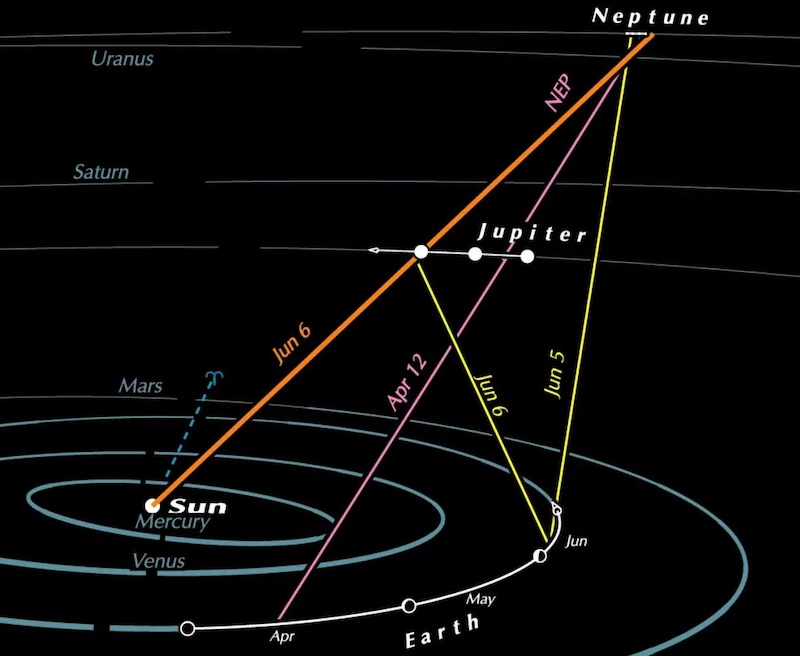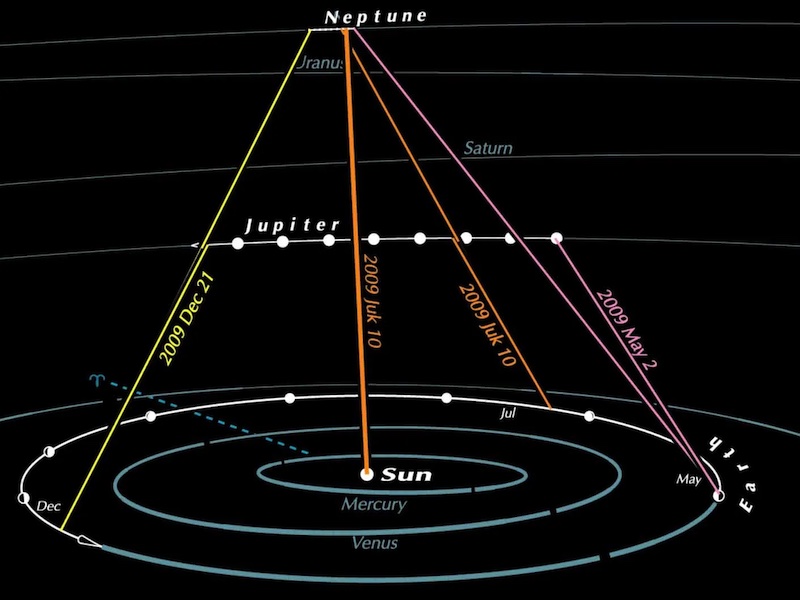
Originally published on June 2, 2022, at Guy Ottewell’s blog. Reprinted with permission. Jupiter will overtake Neptune on Monday, June 6, in the race of the planets around the sun. This event takes place once every 12.7 years.
Helioconjunction: Jupiter passes Neptune
Jupiter goes around the sun in just under 12 years. This is its sidereal period, the period in relation to the stars, or space in general. But when it comes around to where it last overtook Neptune, the more distant planet has moved slowly on. So Jupiter overtakes Neptune about 8.5 months later. The last heliocentric conjunction of these two planets was September 19, 2009. The next one will be tomorrow, Monday, June 6, 2022. The following one will be February 18, 2035.
The conjunctions as seen from Earth are called geocentric conjunctions. They are more irregular. As seen from Earth, the Jupiter-Neptune conjunction has already happened – in April 2022 – when we were out west of the sun and had a premature view of the planets’ lineup.
During that April 2022 event, Earth’s relatively rapid orbit made the planets appear to go into retrograde motion or move from side to side in the sky.
Triple conjunctions
If conjunctions of Jupiter and Neptune happen near the times of the planets’ oppositions – Earth passing both of them on the inside track – then we have a triple conjunction. So Jupiter appears to overtake Neptune, then falls back past it, then passes it again.
The last triple conjunction of Jupiter and Neptune was in 2009. The conjunction dates were May 2, July 10 and December 21.

Bottom line: On June 6, 2022 – as seen from the sun – Jupiter will overtake Neptune in the race of the planets around the sun. This is a heliocentric (sun-centered) conjunction, or helioconjunction.











